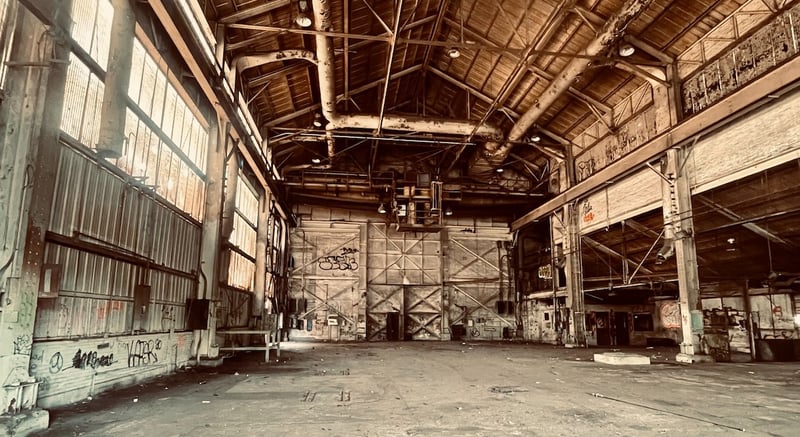Learn the basics of worldizing, and how you can build it into your workflow to create more realistic sound design.
Whether you’ve heard of worldizing before or not, it’s one of the most important concepts to understand if you want to create realistic sound design. Coined by Walter Murch while working on American Graffiti, worldizing refers to the process of making sound effects, dialogue, or music sound like it would in the real world. However, the term doesn’t refer to any single technique – there are several methods you can use to give your sounds a more lifelike quality, and we’ll cover them later in this article.
Worldizing can be an incredibly powerful tool for storytelling with sound. But when it comes to your own projects, where do you start? What should you be worldizing, and how? We’ll answer all that and more, starting with the basics.
What is the Purpose of Worldizing?
To understand worldizing, imagine a soldier’s costume for a medieval film. Because no usable clothing from the time still exists, a new costume would have to be made using the appropriate fabrics, dyes, and construction techniques of the time. Then, the costume department would add period-accurate accessories such as a helmet and sword belt, along with other touches like the insignia of a royal house.
Although the costume might look authentic, it would need to be “weathered” by distressing the fabric, applying a subtle layer of dust and dirt, or even adding bloodstains if a battle has just occurred. All of these small touches combine to create the illusion of a real medieval soldier’s uniform so that the audience can suspend their disbelief and become immersed in the story.
Similarly, worldizing alters sounds in many subtle (and sometimes not-so-subtle) ways to make them seem like they’re occurring in the environment onscreen along with the production sound. Here are some of the main acoustical effects that influence the way we hear sounds in the world:
- Reverberation - The characteristic sound of a room is a result of sound waves bouncing off of surfaces, overlapping and combining in complex acoustical interactions. The size and shape of a space, along with the materials it’s made of and the objects inside, all affect the character of the reverberation, creating a distinct sonic signature.
- Reflections - Sound reflections outdoors sound very different from indoor reverb. Because sound can freely escape in most directions, we typically only hear discrete reflections off of large, flat surfaces like streets and buildings. In some places, such as canyons, sound continues to bounce around, creating multiple distinct echoes. Just like reverb, these reflections all have unique tonal characteristics that vary greatly from place to place.
- Effect on the world - In addition to reverb and reflections, sounds can affect environments in other ways. The rattle of windows just after an explosion, the buzz of a car chassis from an overpowered subwoofer, and a flock of birds scattering after a gunshot are all examples of this. When worldizing sounds, especially loud ones, be sure to consider what effects they might have on the environment.
- Background noise - Although sound editors often go to great lengths to reduce noise in sound effects recordings, a small amount of background noise can actually help sounds blend into a scene – provided it’s the right kind of noise. For example, the hum of a computer fan in the background of an ADR recording is usually unwelcome, while a bit of natural room tone can be desirable.
Together, these factors create a powerful psychoacoustic effect. Worldizing takes advantage of these phenomena to fool the viewer into believing that sounds added in post are actually part of a scene, allowing them to suspend their disbelief and let the story take over. For example, in Peter Jackson’s The Lord of the Rings trilogy, sound designers recorded cave troll vocalizations in WWII-era tunnels and a stone warehouse to create the cavernous sound of the Mines of Moria.
What Should be Worldized, and When?
Because it’s not usually practical to worldize every sound in a project, you’ll have to decide when it’s needed most and when it can make the most impact. As a general rule, worldizing is most often needed on “dry” sounds such as up-close recordings, as well as designed sounds that heavily feature synthesis or effects. Here’s a partial list of common candidates for worldizing:
- Close-mic’d sound effects
- Close-mic’d Foley
- Designed sound effects
- Synthesized sound effects
- ADR and voiceover for animation
When considering what to worldize, remember that loud sounds such as door slams and gunshots excite the environment more than quiet sounds, such as clothing Foley. Additionally, sounds that are in the distance typically need more worldizing than close-up sounds, due to the greater amount of reflections. Therefore, loud and faraway sounds should be your first choices for worldizing, whereas quiet, close-up sounds may need just a bit or none at all.
You can also use worldizing for narrative purposes, like Richard King did with the Edith Piaf song “Non, je ne regrette rien” featured in Inception. Although the song played inside of a dream, the story required it to sound like it was playing in the world and not in the characters’ minds or as part of the score. King achieved this by recording the song through speakers on the film set, effectively placing the sound in the space even though there are no visible speakers in the scene.
"In short, worldizing is the process of making sounds fit into a piece of media as if they existed in the 'real' world."
Recording sounds in real environments is the primary and most realistic method of worldizing.
How to Worldize Sounds
There are several ways to worldize sounds, and which method you choose will depend on the effect you want to achieve as well as your equipment and capabilities.
- Recording on location - the simplest and most realistic way to worldize is by simply recording sounds in the environment they’re meant to be in. Sometimes, production sound mixers have extra time to record key sounds for sound editors to use, such as a unique-sounding door. You may also be able to revisit the shooting location to record your own sound effects.
- Re-amping on location - When circumstances prevent you from recording sounds on location, you can do the next best thing and reamplify the sounds in the environment. To reamp, you’ll need a device to play the sound, one or more speakers to play them out of, and one or more microphones to record with. Full-range speakers are ideal for re-amping, unless you need a specific type such as a car stereo or public address system.
- Re-amping elsewhere - If you don’t have access to the real locations – or if they don’t exist – you can still worldize sounds rather effectively by reamping them in similar spaces. In your garage, a neighborhood street (neighbors?), or in the middle of a canyon. Sometimes all you need to do is record a sound out of your studio monitors or a guitar amp for a bit of extra air.
While the methods above are usually preferable, you can also worldize sounds digitally using impulse responses. An impulse response is a recording of an impulse such as a sine sweep, a burst of noise, or a balloon pop that stimulates an acoustical response from an environment. These recordings are then “deconvolved” by convolution processing, which replicates the acoustical response so it can be applied to any sound in post.
Some convolution plugins, like Speakerphone by Audio Ease, use impulse responses to capture the sound of speakers, such as public address systems, intercoms, megaphones, and radios. These are an excellent choice for “futzing” dialogue, whether you need the authentic sound of military radio transmissions or just want to get creative with Darth Vader-style vocal sound design.
While you will lose some of the realism factor compared to re-amping, there are other benefits to digital worldizing. For one thing, it gives you much more control, allowing you to make minute adjustments in pursuit of the perfect sound. Here are some plugins to include on a worldizing signal chain:
- Filters for removing excess low or high frequencies before processing
- EQ to fine-tune the sound before reverb and delay
- Compressor and/or limiter for controlling dynamic range pre-processing
- Convolution speaker emulation using speaker impulse responses (if necessary)
- Delay set to a short slapback for outdoor spaces or longer echo for distant reflections
- Convolution reverb loaded with stock or custom impulse responses
- EQ for final tone adjustment
- Compressor and/or limiter for controlling dynamic range post-processing
Bear in mind that it can be easy to overdo processing, so always double-check your work to make sure you don’t “over-worldize”. A little processing can go a long way.
Another Tool in the Toolbox
Now that you’ve had a crash-course in worldizing, keep your ears open for opportunities to make your productions sound more lifelike. Over time, you’ll learn to instinctively recognize sounds that need worldizing, and you can build it into your workflow.
If you’re looking for pre-worldized sound effects, check out libraries like King Collection: Volume 1 and Sonomar Collection: Abandoned, both of which feature ready-to-use sounds with real ambience that helps them “Stick to the screen.”
Finally, keep expanding your sound vocabulary with articles like Sound Effects Terms Explained Part 1 and What is Walla? - you’ll be a pro in no time!
Dante Fumo is a Midwest-based sound designer, editor, and mixer specializing in independent film and Dolby Atmos mixing. In his free time, Dante composes electronic music and publishes Harmonic Content, a zine about sound.














